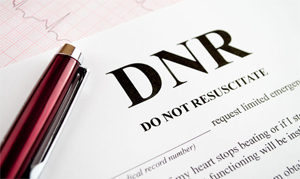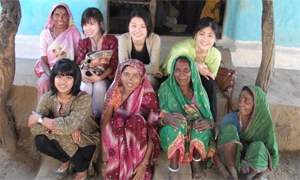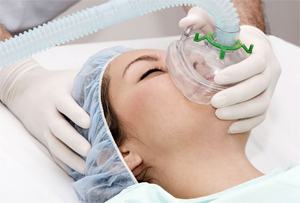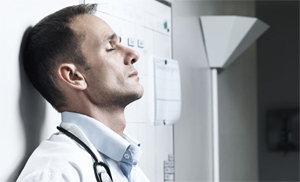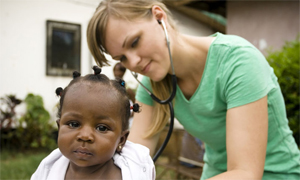Introduction
Cannabis was first used in China around 6,000 years ago and is one of the oldest psychotropic drugs known to man. [1] There are several species of cannabis, the most common are Cannabis sativa, Cannabis indica and Cannabis ruderalis. [2] The two main products that are derived from cannabis are, hashish – the thick resin of the plant, and marijuana – the dried flowers and leaves of the plant. [1] Cannabis contains over 460 chemicals and 60 cannabinoids (chemicals that activate cannabinoid receptors in the body). [1,2] The major psychotropic constituent of cannabis is known as delta-9-tetrahydrocanabinol (THC); others include cannabinol and cannabidiol (CBD).
Cannabinoids exert their effect throughout the body through binding with specific cannabinoid receptors. There are two types of cannabinoid receptors found in the body: CB1 and CB2. Both are G-protein coupled plasma membrane receptors. The CB1 receptors are mostly found in the central nervous system, whilst CB2 receptors are mainly associated with immunological cells and lymphoid tissue such as the spleen, tonsils, and thymus. [3,4]
Delta-9-tetrahydrocanabinol (THC) and other cannabinoids are strongly lipophilic and are rapidly distributed around the body. [5] Because of its strong lipophilic nature cannabinoids accumulate in adipose tissue and have a long elimination time of up to 30 days, although the psychoactive effects generally wear off after a few hours. Medical cannabis can be dispensed and taken in a variety of ways including as a herbal cigarette, ingestible forms, or as herbal tea. However, marijuana cigarettes are commonly preferred as they provide higher bioavailability. [5]
Medical marijuana users represent a large range of ages, levels of education attainment, employment statuses, and racial groups. [6] A Californian study examining medical marijuana use showed 76.6% of medical marijuana users use seven grams of marijuana or less per week. Therefore, the majority of medical marijuana users are likely to consume amounts equivalent to mild to moderate recreational cannabis use. [6]
The rescheduling of cannabis in Australia draws strong debate and opinions from both sides of the issue. This article will provide an overview of the most popular arguments for and against the legalisation of cannabis for medicinal purposes.
The legal status of medical marijuana in Australia
Currently cannabis is a Schedule nine drug in all Australian states and territories, placing it in the same category as drugs like heroin and lysergic acid diethylamide (LSD). [7] Legally, drug scheduling in Australia is a state issue, however, all states abide by the federal government’s scheduling of cannabis as a Schedule nine drug, as per the Standard for the Uniform Scheduling of Medicines and Poisons. [7,8] The use of a drug which is classified as Schedule nine for recreational or medical purposes is illegal and a criminal offence. Research into cannabis in Australia is highly restricted. [7] Cannabis use is common in Australia with approximately 40% of Australians aged fourteen years or older saying they have used cannabis, and over 300,000 Australians using it daily. A number of Australians are already self-medicating with cannabis for a range of complaints including chronic pain, depression, arthritis, nausea, and weight loss. However, these people risk legal action from authorities, particularly if cultivating their own cannabis. Moreover, if they purchase cannabis from a dealer they also face quality and supply issues. [9] Proponents of medicinal cannabis envisage a system similar to other drugs of dependence, like opiates, whereby holders of a valid prescription will be able to purchase or access the drug but where recreational use of the drug would still be illegal.
A number of countries have decriminalised cannabis for medical purposes such as the Netherlands, Israel, eighteen states in the United States of America (USA), Canada and Spain. [10] However, the drugs known as Dronabinol (containing just THC), Nabilone (containing a synthetic analogue of THC) and Nabiximols (a spray containing CBD and THC) are available as Schedule eight drugs throughout Australia. [7] Schedule eight drugs are drugs which have a high likelihood for abuse and dependence and require regulation in their distribution and possession. [7,8] However, some claim that these preparations lack many of the cannabinoids found in natural cannabis plants and this leads to different physiological and therapeutic effects compared to natural cannabis. [4] Public support in Australia for medical cannabis is very high with a survey finding 69% of the public supporting the use of medical cannabis and 75% supporting more research into the medical potential of the drug. [11]
Arguments for legalisation
Pain relief
Marijuana has potent analgesic properties which can be used in pain relief for a variety of conditions that can cause intense pain, such as cancer pain and acquired immunodeficiency syndrome (AIDS). Marijuana may even provide superior pain relief when compared to opiates and opioids. A parallel study in the United Kingdom (UK) compared the use of a THC and CBD extract, a THC only extract, and a placebo in the treatment of cancer pain. It found that a THC:CBD mixture (such as that found naturally in the cannabis plant) is efficacious for the relief of advanced cancer pain that is not adequately controlled by opiates alone. [4] Therefore, the legalisation of medical cannabis could relieve pain and improve the quality of life for severely ill patients suffering from a range of painful conditions.
Appetite stimulation
It has been proven in animal studies that THC can have a stimulating effect on appetite and lead to an increase in food intake. [2,5,12,13] There are a large number of clinical applications for THC for appetite stimulating purposes. Conditions which can cause cachexia (uncontrolled wasting) such as HIV/AIDS, cancer, multiple sclerosis (MS), could be treated with THC to stimulate the patient’s appetite, increase food uptake, restore weight, and improve the strength and wellbeing of the patient. [2,13] Human trials in the 1980s which involved healthy control subjects inhaling cannabis found that the cannabis caused an increase caloric intake of 40%. [14] The legalisation of cannabis for medical purposes could help improve both health outcomes and the quality of life in patients suffering from a range of conditions.
Anti-emetic
In Canada and the USA, dronabinol and nabilone have been used in the treatment of chemotherapy induced nausea and vomiting since the 1980s. [15] A systematic literature review found that cannabinoids were more effective than established anti-emetic drugs in its treatment. [16] By reducing or eliminating the often debilitating and painful symptoms of chemotherapy induced nausea and vomiting, medical cannabis is hoped to improve the quality of life for the patient and their family. A reduction in the vomiting and pain associated with chemotherapy may also cause an increase in adherence to chemotherapy by cancer patients and result in better patient outcomes. [2,13] Therefore, the rescheduling of cannabis could prove as a highly effective anti-emetic for cancer patients and could even improve their prognosis by encouraging adherence to chemotherapy.
Neurological conditions
Cannabis may also be used to lessen or alleviate an entire range of symptoms associated with MS and other neurological conditions. A Canadian randomised, placebo-controlled trial investigating the use of smoked cannabis for MS-related muscle spasticity found that cannabis was superior to the placebo in reducing pain and spasticity. [17] Another trial conducted in Canada on the use of smoked cannabis for chronic neuropathic pain found that an inhalation of the cannabis formulation prepared for the trial three times daily for five days reduced pain intensity, improved the quality of sleep, and had minimal adverse effects. [18] The legalisation of medical cannabis could therefore make a significant difference to the lives of the thousands of Australians suffering MS and many other neurological conditions.
Safety and overdosing
Cannabis may also serve as an incredibly safe alternative to groups of medications prescribed for pain, such as opiates. The CB1 cannabinoid receptors are the main receptors responsible for the analgesic effects of cannabis and are located in the brain. However, they are in very low numbers in the regions of the brain stem co-ordinating cardiovascular and respiratory control. [2,19] This means it is essentially impossible to overdose from cannabis. [5] However, opioid receptors are located in this brain stem region hence signifying that opioids can interfere with cardiovascular and respiratory functions and lead to death. [19,20] Prescription opioid deaths are a small but concerning issue throughout developed nations. For example, in 2005 there were over 1,000 deaths related to prescribed oxycodone in the US. [20] Medical marijuana may offer a safer alternative form of pain relief as it removes the risk of accidental overdose which can lead to death.
Arguments against legalisation
Cannabis use and psychiatric disorders
A longstanding argument against the medical use of cannabis has been that exposure to cannabis can lead to the development of psychiatric disorders, namely schizophrenia. A Scottish systematic review of eleven studies investigating the link between marijuana use and schizophrenia supported this view and found that cannabis use did appear to increase the risk of schizophrenia. [21] Another study has also shown that there is an association between heavy cannabis use and depression. [22] Further effects of cannabis induced psychosis can include self-harming and self-mutilating behaviours. [23,24] The relationship between cannabis use and mental health issues appears to be dose-related with higher amounts of marijuana use related to more severe psychiatric complications. [21,22] Some say it would be unethical to prescribe a patient cannabis when there is a risk of the patient developing mental illness and potentially harming themselves or others. Particularly, when there are other drugs available without such adverse effects on mental health and stability.
Public safety
With the legalisation of medicinal cannabis come clear public safety concerns, particularly in the areas of vehicle and pedestrian safety. Cannabis affects the brain and can cause feelings of disorientation, altered visual perception, hallucinations, sleepiness, and poorer psychomotor control. [5,19] A study conducted in California found that on a particular evening, 8.5% of motorists had THC in their system and that holders of a medical cannabis permit were significantly more likely to test positive to THC than those who did not hold a permit. [25] It has also been shown that drivers using cannabis had about three to seven times the risk of being in a motor car collision than drivers who were not using cannabis. [26] However, it is interesting to note that those driving under the influence of alcohol were at a higher risk of having a collision than those using cannabis. [27] Also interesting is the fact that after medical marijuana programs were instituted in the US, traffic fatalities decreased nine percent across the sixteen states which had programs at the time of the study; this is believed to be due to a substitution of alcohol with marijuana. [27,28] Pedestrians and cyclists who are prescribed cannabis are also at higher risks of being injured in a collision. In terms of non-vehicular injuries, an American study showed cannabis use was associated with an increased risk of injuries from causes such as falls, lacerations, and burns. [29] Hence the legalisation of medical cannabis not only poses a risk to the personal safety of the patient but also to the physical safety of the wider community.
Drug diversion
Given the popularity of cannabis as a recreational drug, there is always the risk of wide scale drug diversion occurring–that is people without a prescription for cannabis gaining access to the drug. This can happen in a number of ways like a patient sharing their medication with others or the patient selling their medication. In America diversion of medical marijuana is an increasing issue, particularly amongst adolescents. A study in the state of Colorado in the USA found that out of a group of 164 adolescents at a substance abuse treatment facility, 74% had used someone else’s medical marijuana, with the mean number of times the adolescents had used someone else’s medical marijuana being over 50. [30] Illicit use of cannabis for non-medical purposes exposes people to the damaging physical, mental and social impacts of drug use. There are clear questions surrounding how this would be prevented and how young adults especially could be prevented from accessing cannabis due to diversion. It must be asked whether it is ethically responsible to reschedule marijuana given that such a large number of other people, particularly adolescents, will have access to someone else’s medical cannabis.
Addictiveness and dependence
The legalisation of cannabis as a medication has the potential to cause patients to develop an addiction to the drug and possible dependence. Cannabis dependence is a recognised psychiatric disorder and it is estimated that over one in ten people who try marijuana will become addicted to it at some point. [31] Although dependence to marijuana may be lower than other drugs like, heroin, cocaine and alcohol, users can still face withdraw symptoms including sleep difficulty, cravings, sweating and irritability. [5,32] With the potential of people becoming addicted to medical cannabis and with scarring consequences for their personal life some say it is ethically questionable to subject people to it in the first place.
Availability of cannabinoid and synthetic cannabinoid drugs
Those opposed to cannabis being rescheduled for medical purposes claim that the availability of cannabinoid and synthetic cannabinoid drugs already in Australia namely, Dronabinol, Nabilone and Nabiximols, makes legalising medical cannabis unnecessary. They state that these drugs contain many of the same compounds as cannabis and can be used for treating many of the same conditions. [13] For example, Dronabinol has been shown to be effective in relieving patients suffering chronic pain which is not fully relieved by opiates. [33] Therefore, the cannabinoid medications which are already available in Australia may provide many of the same therapeutic benefits offered by cannabis, and as such rescheduling cannabis would be unnecessary.
Carcinogenicity
Whether marijuana smoke causes cancer, in particular lung cancer, is a subject of much debate and research itself. It is well established that tobacco smoke is carcinogenic and deeply damaging to overall health. [34] With marijuana containing many of the same carcinogens as tobacco, and often being in cigarette form, it is not unreasonable to expect similarly adverse results with cannabis use. [5,35] However, a case-control study by Hashibe et al. [36] found that there was not a strong relationship between marijuana use, even in heavy amounts, and the incidence of oesophageal, pharyngeal, laryngeal, and lung cancer. Some evidence exists, showing that cannabinoids may in fact kill some cancers such as gliomas, lymphomas, lung cancer and leukemia. [37-39] Despite evidence that marijuana smoke contains mutagenic and carcinogenic chemicals, epidemiologically this was not confirmed to be the case. [35,36] Overall the carcinogenic or cancer-fighting properties of marijuana remain unclear and contradictory. More long-term, large population research should be conducted so that the seemingly contradictory nature of the drug can be better understood. [36]
Recommendation
Cannabis offers exciting possibilities for patients afflicted by cancer, HIV/AIDS, MS, chronic pain and other debilitating conditions. Although medical marijuana programs face several obstacles, the benefits offered by medical marijuana and the positive impact this drug could have on the lives of thousands of patients and their families make a strong case for its consideration. The potential drawbacks can be minimised or even overcome through a number of measures, including: the close medical supervision of patients (e.g., proper patient education and monitoring), the creation of appropriate infrastructure (e.g., medical marijuana dispensaries, as seen in California) and the creation of laws and policies that are not only supportive of medical marijuana patients but will also, minimise the risk the drug poses to the public (e.g., strict penalties for medical marijuana diversion).
Conflict of interest
None declared.
Correspondence
H Smith: hamish.smith@y7mail.com
References
[1] McKim WA. Drugs and behavior: An introduction to behavioral pharmacology 4th ed. Upper Saddle River: Prentice-Hall Publishing; 2000.
[2] Amar MB. Cannabinoids in medicine: A review of their therapeutic potential. Journal of Ethnopharmacology. 2002;105(1):1–25.
[3] Sylvaine G, Sophie M, Marchand J, Dussossoy D, Carrièr D, Caryon P, et al. Expression of central and peripheral cannabinoid receptors in human immune tissues and leukocyte subpopulations. Eur J Biochem. 2005 Apr;232(1):54–61.
[4] Johnson JR, Burnell-Nugent M, Lossignol D, Gaena-Morton ED, Potts R, Fallon MT. Multicenter, double-blind, randomized, placebo-controlled, parallel-group study of the efficacy, safety, and tolerability of THC: CBD extract and THC extract in patients with intractable cancer-related pain. J Pain Symptom Manage. 2010 Feb;39(2):167-79.
[5] Ashton CH. Pharmacology and effects of cannabis: A brief review. Br J Psychiatry. 2001 Mar:178(2):101-6.
[6] Reinarman C, Nunberg H, Lanthier F, Heddleston T. Who are medical marijuana patients? Population characteristics from nine California assessment clinics. Journal of Psychoactive Drugs. 2011 Jul 43;2:128-35.
[7] National Drugs and Poisons Schedule Committee. Standard for the uniform scheduling of drugs and poisons No. 23. Canberra (ACT): Therapeutic Goods Administration; 2008 Aug. 432 p.
[8] Moulds RF. Drugs and poisons scheduling. Aust Prescr [Internet]. 1997 [Cited 7 Feb 2013];20:12-13. Available from: http://www.australianprescriber.com/magazine/20/1/12/3#qa
[9] Swift W, Hall W, Teeson M. Cannabis use and dependence among Australian adults: Results from the national survey of mental health and wellbeing. Addiction. 2001 May;96(5):737–48.
[10] Marijuana Policy Project (MPP). The Eighteen States and One Federal District With Effective Medical Marijuana Laws. Washington (DC): MPP; 2012 Dec. 19 p.
[11] National Institute of Health and Welfare. The National Drug Strategy Household Survey 2011. Australian Government: Canberra. 2012.
[12] Mechoulam R, Berry EM, Avraham Y. Endocannabinoids, feeding and suckling- from our perspective. Int J Obes. 2006 Apr; 30(1):24-8.
[13] Robson P. Therapeutic aspects of cannabis and cannabinoids. Br J Psychiatry. 2001 Feb;178:107-15.
[14] Foltin RW, Fischman MW, Byrne MF. Effects of smoked marijuana on food intake and body weight of humans living in a residential laboratory. Appetite. 1988 Aug;11(1):1-14.
[15] Sutton IR, Daeninck P. Cannabinoids in the management of intractable chemotherapy-induced nausea and vomiting and cancer-related pain. J Support Oncol. 2006 Nov;4(10):531-5.
[16] Tramèr MR, Carroll D, Campbell FA. Cannabinoids for control of chemotherapy induced nausea and vomiting: Quantitative systematic review. BMJ. 2001 Jul;323(7303):16-21.
[17] Corey-Bloom J, Wolfson T, Gamst A. Smoked cannabis for spasticity in multiple sclerosis: A randomized, placebo-controlled trial. CMAJ. 2012 Jul;184(10):1143-50.
[18] Ware MA, Wang T, Shapiro S. Smoked cannabis for chronic neuropathic pain: A randomized controlled trial. CMAJ. 2010 Oct;182(14):694-701.
[19] Adams IB, Martin BR. Cannabis: Pharmacology and toxicology in animals and humans. Addiction. 1996 Nov;91(11):1585-1614.
[20] Paulozzi LJ, Ryan GW. Opioid analgesics and rates of fatal drug poisoning in the United States. Am J Prev Med. 2006 Dec;31(6):506-11.
[21] Semple DM, McIntosh AM, Lawrie SM. Cannabis as a risk factor for psychosis: Systematic review. J Psychopharmacol. 2005 Mar;19(2):187-194.
[22] Degenhardt L, Hall W, Lynskey M. Exploring the association between cannabis use and depression. Addiction. 2003 Nov;98(11):1493-1504.
[23] Khan MK, Usmani MA, Hanif SA. A case of self amputation of penis by cannabis induced psychosis. J Forensic Leg Med. 2012 Aug;19(6):355-7.
[24] Serafini G, Pompili M, Innamorati M, Rihmer Z, Sher L, Girardi P. Can cannabis increase the suicide risk in psychosis? A critical review. Curr Pharm Des. Jun 2012;18(32):5165-87.
[25] Johnson MB, Kelley-Baker T, Voas RB, Lacey JH. The prevalence of cannabis-involved driving in California. Drug Alcohol Depend. Jun 2012;123(1-3):105-9.
[26] Ramaekers JG, Berghaus G, van Laar M, Drummer OH. Dose related risk of motor vehicle crashes after cannabis use. Drug Alcohol Depend. 2004 Feb;73(2):109-19.
[27] Sewell RA, Poling J, Sofuoglu M. The effect of cannabis compared with alcohol on driving. Am J Addict. 2009;18(3):185-93.
[28] Anderson DM, Rees DI. Medical marijuana laws, traffic fatalities, and alcohol consumption. Denver (CO): Institute for the Study of Labor. 2011 Nov. 28 p.
[29] Gerberich SG, Sidney S, Braun BL, Tekawa IS, Tolan KK, Quesenberry CP. Marijuana use and injury resulting in hospitalisation. Annals of Epidemiology. 2003 Apr;13(4):230-7.
[30] Salomonsen-Sautel S, Sakai JT, Thurstone C, Corley R, Hopfer C. Medical marijuana use among adolescents in substance abuse treatment. J Am Acad Child Adolesc Psychiatry. 2012 Jul;51(7):694–702.
[31] Hall W, Degenhardt L, Lynskey M. The health and psychological effects of cannabis use. Canberra (ACT): Commonwealth Department of Health and Ageing; 2001.
[32] Budney AJ, Vandrey R, Moore BA, Hughes JR. Comparison of tobacco and marijuana withdrawal. J Subst Abuse Treat. 2008 Dec;35(4):362-68.
[33] Narang S, Gibson D, Wasan AD, Ross EL, Michna E, Nedeljkovic SS, et al. Efficacy of dronabinol as an adjuvant treatment for chronic pain patients on opioid therapy. The Journal of Pain. 2008 Mar;9(3):254-64
[34] Thun MJ, Henley SJ, Calle EE. Tobacco use and cancer: An epidemiologic perspective for geneticists. Oncogene. 2002 Oct;21(48):7307-7325.
[35] Hecht SS, Carmella SG, Murphy SE, Foiles PG, Chung FL. Carcinogen biomarkers related to smoking and upper aerodigestive tract cancer. J Cell Biochem Suppl. 1993 Feb;17(1):27-35.
[36] Hashibe M, Morgenstern H, Cui Y, Tashkin DP, Zhang ZF, Cozen W, et al. Marijuana use and the risk of lung and upper aerodigestive tract cancers: Results of a population-based case-control study. Cancer Epidemiol Biomarkers. 2006 Oct;15(1):1829.
[37] Munson AE, Harris LS, Friedman MA, Dewey WL, Carchman RA. Antineoplastic activity of cannabinoids. J Natl Cancer Inst. 1975 55:597-602.
[38] McKallip RJ, Lombard C, Fisher M, Martin BR, Ryu S, Grant S, et al. Targeting CB2 cannabinoid receptors as a novel therapy to treat malignant lymphoblastic disease. Blood. 2002;100:627-34.
[39] Sanchez C, de Ceballos ML, del Pulgar TG, Rueda D, Corbacho C, Velasco G, et al. Inhibition of glioma growth in vivo by selective activation of the CB(2) cannabinoid receptor. Cancer Res 2001, 61:5784-89.




